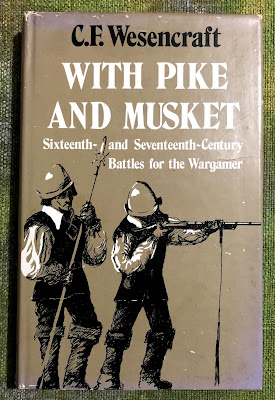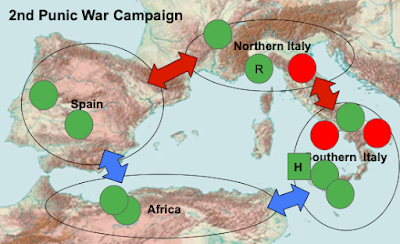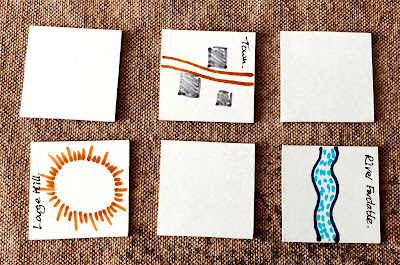The Battle of Acelum 214 BC is being played as part of the 2nd Punic War campaign turn 3. The setup details, deployment, and campaign context can be seen in the previous post. One item left to do before starting the game was to create the chance cards for each army. These differ slightly to reflect an armies characteristics and the Carthaginian chance deck also gain an additional rally card replacing a no effect card because their armies out number the Romans in the North Italy region.
 |
| The deployed armies |
 |
| Chance card decks. The blue are for the Carthaginian army and red for the Roman army. |
The opening moves had the Roman centre push forward to engage Carthaginian forces. While Carthaginian forces advance on the right flank. Seeing the risk to their flank the Roman commander moved his reserves to counter the flanking attempt on the hill.
 |
| Opening couple of moves as both forces action their battle plans. |
Forces quickly came together and melees developed in the centre and on the hill. The reserve Roman heavy infantry arrived in the nick or time to stymie the attempted Carthaginian flanking move. On the river flank heavy cavalry from both sides are also engaged.
Somewhat unusually both commanders and their attached units are involved early in the battle on opposite flanks. In the game the loss of a unit with an commander will mean any positive chance cards (rally and initiative) drawn are ignored and treated as no effect cards. Negative cards (no ammunition and confusion) however are still applied.
 |
| Melees occur in the centre and near flank. |
 |
| Carthage's flanking move is slowly gaining traction. |
In the centre Roman heavy infantry start to overwhelm the opposing Carthaginian heavy infantry. While Carthaginian flanking attempts have been contained to this point. It is now a race to see if the Roman centre breaks through before their flanks are attacked.
Both commanders have to beat a hasty retreat as their attached units are lost. Any advantages from the chance cards drawn will now be ignored.
Roman forces were impacted by some negative chance cards but are able to breakthrough in the centre, then chase off the remaining Carthaginian forces to secure a minor victory.
 |
The Roman centre is on the verge of breaking through.
|
 |
| Roman forces breakthrough in the centre and chase off the remaining Carthaginian forces. |
A much needed Roman victory who are struggling in the campaign.




















































